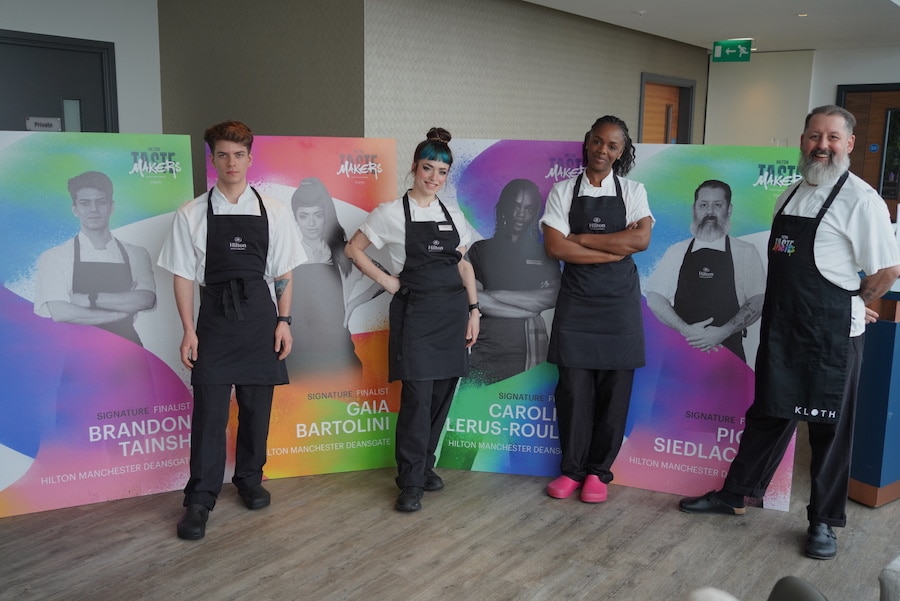How Cumbria Clocks keep ‘the heartbeat of Manchester’ ticking
- Written by Thom Bamford
- Last updated 10 months ago
- City of Manchester, Cornerstone, History
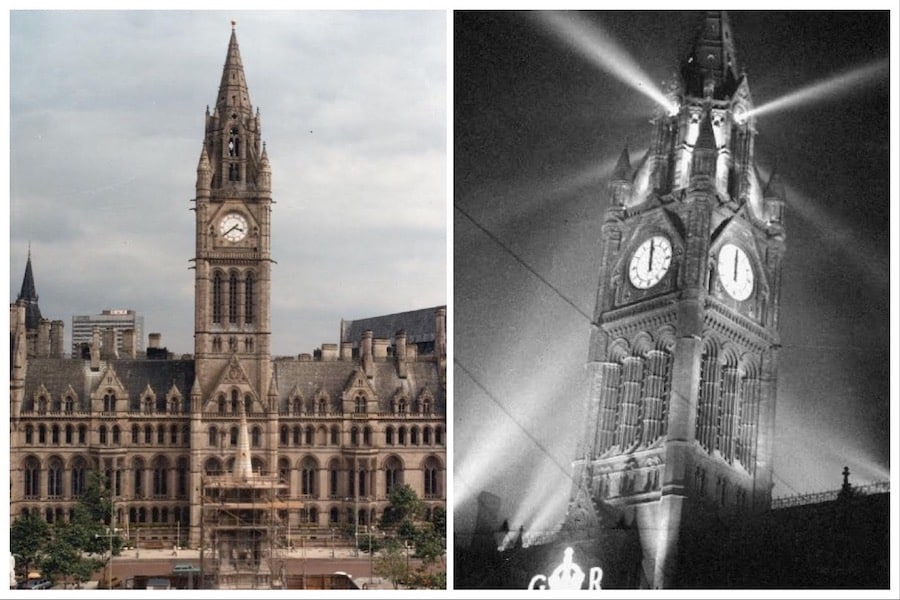
High above Manchester, at an impressive 280 feet, stands the iconic clock tower of Manchester Town Hall, keeping a watchful eye over the city.
It has kept us in beat and time since New Year’s Day 1879.
Can you imagine the changes this clock has seen across our city?
This towering timekeeper has borne witness to countless changes in Manchester, its four clock faces a constant in the city’s evolving landscape.
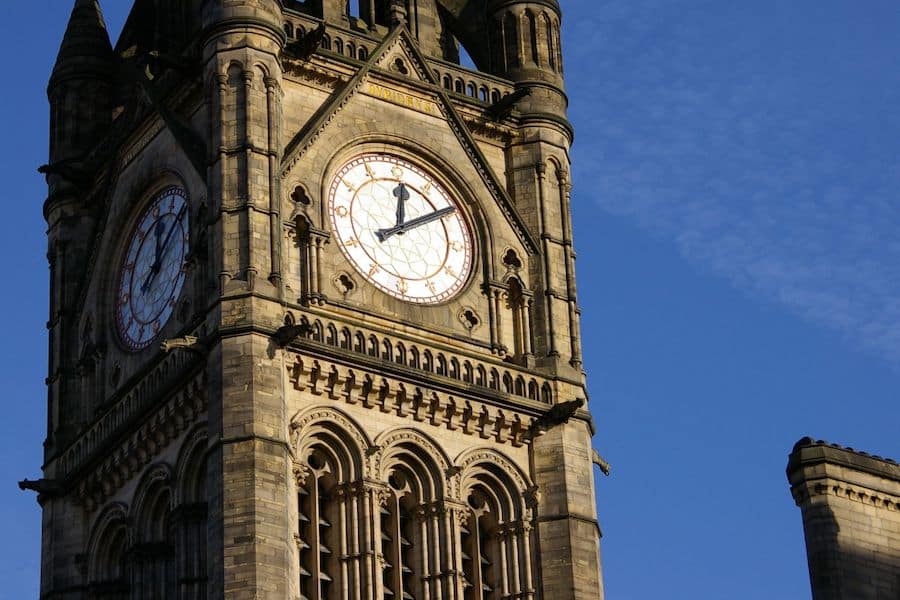
With an inscription visible from Albert Square that reads “Teach us to number our days,” the clock serves as a poignant reminder of the passage of time.
At the top of a winding and rolling 173-step staircase, the clock mechanism sits proudly as an astounding piece of engineering.
Created by the esteemed clockmakers Gillet & Bland, this masterpiece was once one of the largest turret clocks in the country.
Manchester’s town hall clock is equipped with four dials, each originally lit by gas, measuring an impressive 15 feet and nine inches in diameter.
The clock is in the central tower just above the attic level. It can be described as a 12ft flatbed, three train clock with a double 3-legged escapement and a 30 second rementoire.
There are four clock dials which are 15’9” in diameter. The hour hands are 6’ long and the minute hands are 9’ 8” long. The space between the minute markers on the clock dials is 9½”.
The clock mechanism itself is quite unique insofar as there were only five ever made and Manchester’s was the first and the largest. The smaller ones are situated in Hampton Court, The Birmingham Law Library, The Royal Courts of Justice, and Toronto City Hall.
The Cumbria Clock Company has been the guardian of this mechanical marvel for the past 30 years.
Mark Crangle, one of Cumbria Clocks’ dedicated caretakers, recently shared the intricacies of maintaining such a historic piece of Manchester’s heritage.
Manchester Town Hall clock
“As part of the major restoration project at the town hall, every part of the building is being looked at, conserved, restored, and brought up to standard suitable for the 21st century,” Mark explained.
The clock mechanism and its hands were temporarily removed to facilitate extensive repairs on the tower’s stonework and interior.
The original Gillet & Bland mechanical turret clock, installed in 1878 and set going at noon on January 1st, 1879, is a true gem. It boasts Westminster chimes every fifteen minutes and strikes the hours on the Great Abel bell, a behemoth weighing 8.1 tonnes.
Mark’s journey with the clock began 20 years ago, making his current involvement deeply sentimental.
“It’s quite sentimental for me to be back; this clock is quite special to me. It was one of my first ever jobs, and to keep it ticking has a strange sentimentality. ” he reflected.
One of his first tasks was to strip and clean part of the mechanism and replace the weight lines.
Now, the clock mechanism has been carefully cleaned, repaired, and stored, awaiting its reinstallation.
Restoring the clock to its former glory
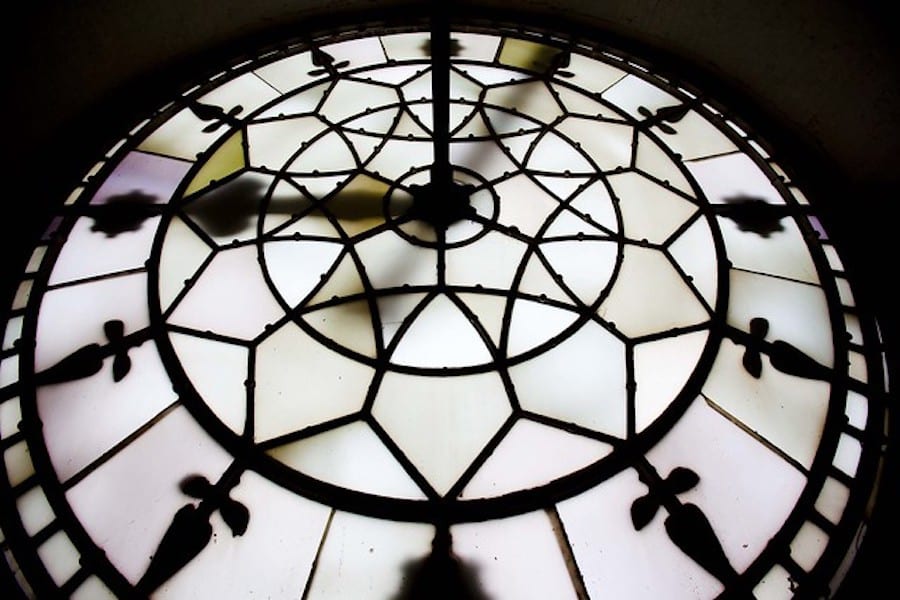
The restoration of the clock dials, the external faces of the clock, has been meticulous.
“The cast iron dials were showing signs of rusting and deterioration; the paintwork had failed, and much of the gold had worn away with the weather,” Mark detailed.
World War II bomb damage had also left its mark, with many glass panels cracked and aged.
“All the old glass was carefully removed, checked, and cleaned.
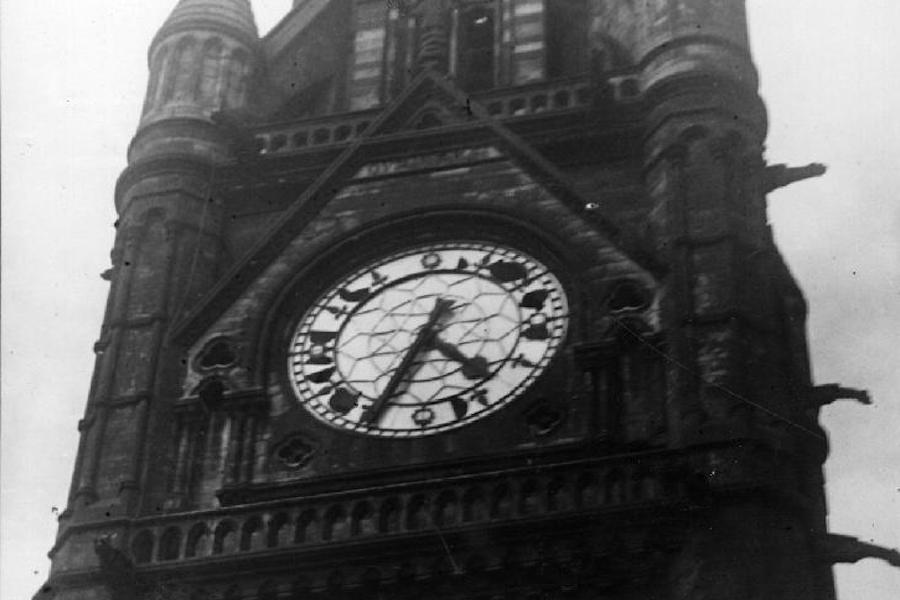
“We reused some of the original glass for the minute markers on each dial, but much of it was too damaged to be reused.
“We have cleaned, treated, and painted the ironwork to the original colours and gilded the centre and minute markers in 23-carat gold leaf,” he continued.
The restoration goes beyond aesthetics.
Once the dials are complete, the clock and its tune player, known as the Carillon, will be reinstalled.
“The Carillon has not worked reliably for quite a few years. We are upgrading it to play more tunes. The current player, which dates back to 1936, uses paper reels with holes to play its 20 tunes – the greatest hits of the 1930s. With the new system, we can compose and add as many tunes as desired, which is the fun part.”
What is the Carillon?
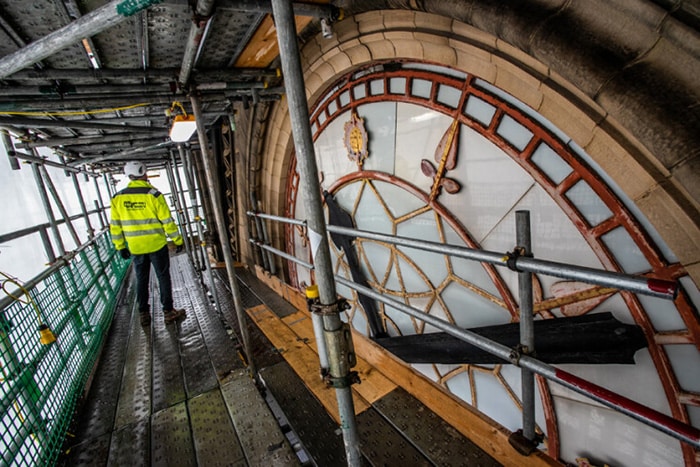
The clock dials were originally illuminated at night by gas. The clock automatically controlled the lighting, turning it up at dusk and back down to a pilot light at dawn.
The original carillon machine which played tunes on the 21 bells was also triggered four times per day by the clock.
All the bells in the tower were named after members of the Town Hall Buildings Committee, and each bell was cast with the respective members initials on it. Abel Heywood was the Chairman of the Buildings Committee, so the hour bell was named Great Abel and has his initials cast in to it. The original hour bell weighed in at six ton nine cwt (Almost six and a half tons).
Unfortunately, within a few years this bell cracked and was taken down, returned to Taylors foundry in Loughborough and recast. The bell was kept at the same diameter but was made thicker, so it now weighs eight ton two cwt (8.1 tons).
Each of the bells also had a line from a poem by Alfred, Lord Tennyson cast around the crown.
The poem is titled Ring Out Wild Bells and is centred around New Year and a desire to ring out the negative and welcome the positive as the old year dies. Great Abel has the inscription “Ring out the false, Ring in the True”.
In 1936 it was decided to have the Town Hall bells recast to commemorate the coronation of Edward VIII and to add an additional three bells to expand the scope of tunes to be played on the carillon.
The original bells were melted down and recast with the same inscriptions on the bells closest in weight to the originals. There are now three plain bells in the belfry with no inscription.
The tenor bell which weighs just over two tons was inscribed with a dedication to the coronation of Edward VIII. As Edward abdicated, it was decided that this could not remain, so Edward was ground off and George engraved in. They also removed the surplus II to make it George VI.
The clock dials do not have any numerals on. The quarter hours (three, six, nine and twelve) have suns on and all other hours are marked with fleur de lis. The hours were all originally marked with fleur de lis, but the quarters were changed at some point to depict the sun.
On 2nd June 1941 the Lloyd Street side clock dial was damaged during an air raid. It wasn’t shrapnel damage; it was actually caused by the minute hand striking the glass. As bombs exploded over near the Central Train Station and bus station the blasts caused the minute hand to strike the clock face and smash the glass.
The clock in Hollywood
The clock mechanism was used in the 2009 Sherlock Holmes movie starring Robert Downey Jr. The audience was led to believe that it was the clock in the Elizabeth Tower (Big Ben).
The Heartbeat of Manchester
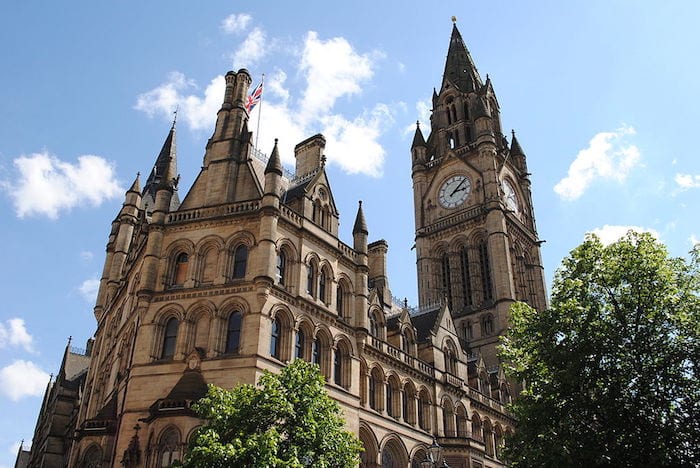
To keep this historic clock ticking, Cumbria Clocks is also manufacturing three new automatic winders.
The previous automatic winding system has reached the end of its life, with the motors and switching causing issues.
The dedicated team on-site includes Rosie, Babs, and Andy, with other engineers joining as needed.
Andy, in particular, has a long history with the town hall clock, having cared for it for over 20 years.
Speaking to I Love MCR, he said: “Working on the Manchester project from start to finish is a wonderful experience. Seeing the building restored to its former glory makes you realise how important the town hall is and how proud the people of Manchester should be.”
As the Manchester Town Hall undergoes its transformation, the clock will continue to chime, marking the passage of time and serving as a symbol of the city’s enduring spirit.
Thanks to the meticulous care from the Cumbria Clock Company, the clock will keep Manchester ticking for generations to come.
You can find out more about Cumbria Clocks by clicking here
- This article was last updated 10 months ago.
- It was first published on 28 June 2024 and is subject to be updated from time to time. Please refresh or return to see the latest version.
Did we miss something? Let us know: press@ilovemanchester.com
Want to be the first to receive all the latest news stories, what’s on and events from the heart of Manchester? Sign up here.
Manchester is a successful city, but many people suffer. I Love Manchester helps raise awareness and funds to help improve the lives and prospects of people across Greater Manchester – and we can’t do it without your help. So please support us with what you can so we can continue to spread the love. Thank you in advance!
An email you’ll love. Subscribe to our newsletter to get the latest news stories delivered direct to your inbox.
Got a story worth sharing?
What’s the story? We are all ears when it comes to positive news and inspiring stories. You can send story ideas to press@ilovemanchester.com
While we can’t guarantee to publish everything, we will always consider any enquiry or idea that promotes:
- Independent new openings
- Human interest
- Not-for-profit organisations
- Community Interest Companies (CiCs) and projects
- Charities and charitable initiatives
- Affordability and offers saving people over 20%
For anything else, don’t hesitate to get in touch with us about advertorials (from £350+VAT) and advertising opportunities: advertise@ilovemanchester.com

Here’s how you can make your moves matter for dementia awareness

£14.5m cultural and creative hub to ‘mark a new chapter’ for Stockport Town Centre

Now you can own a piece of TV history and support a much loved NHS Charity

Best bars and pubs to watch the football and live sport in Manchester

Discotheque Royale vs Piccadilly 21s: which was your favourite 90s Manchester club?













